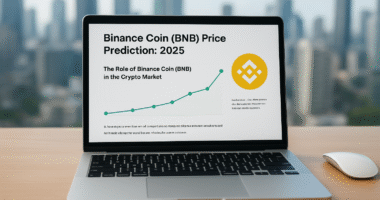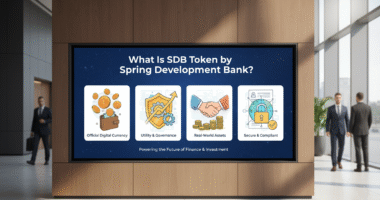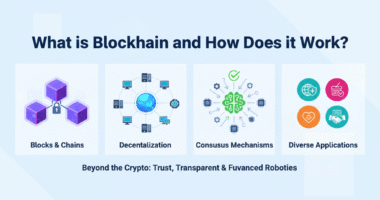Deutsche Boerse Offers Bitcoin and Ether Custody: A New Era for Institutions?
Introduction
The world of digital assets is evolving quickly and now one of the major players in traditional finance has stepped forward. Deutsche Börse (often styled “Deutsche Boerse”) has announced that it will begin offering custody services for the two largest cryptocurrencies: Bitcoin (BTC) and Ethereum (ETH). This is a significant development because it signals that institutions—banks, asset managers, large funds—may now get easier, regulated access to crypto assets. In this blost we’ll unpack what this announcement means, how it works, why it matters, and what the risks are.
What exactly was announced?
In March 2025, Deutsche Börse’s post-trade division, Clearstream, declared that it will begin offering custody and settlement services for Bitcoin and Ethereum to institutional clients, starting in about April. CCN.com+2Cointelegraph+2
The service is aimed at more than 2,500 institutional clients who already use Clearstream’s infrastructure. Coin Insider+1
The custody will be conducted in partnership with Crypto Finance AG, a Swiss subsidiary that Deutsche Börse acquired. Coin Insider
The focus at launch is Bitcoin and Ether, but there are plans to expand into other tokens, as well as additional services such as staking, lending, and brokerage. CoinGape+1
Why is this move important?
Bridging traditional finance & crypto
Institutional investors have typically faced obstacles in the crypto world: concerns about security, custody (i.e., who holds the assets), regulation, and integration into existing systems. By offering regulated custody via a major exchange group like Deutsche Börse, many of those hurdles become lower. Secure custody is one of the biggest road-blocks for institutions.
Regulatory clarity and trust
Because this is coming from a well-known regulated entity in Europe, the move adds credibility to the idea of crypto as part of mainstream finance. With regulatory frameworks such as the EU’s Markets in Crypto‑Assets (MiCA) in place, institutions seek a safe, compliant way to hold crypto assets. Cointelegraph
Operational scale and infrastructure
Clearstream already services large volumes and has established infrastructure. Bringing crypto custody into that context means institutions may not need to build entirely new systems. That efficiency and integration are key benefits.
How the service will work (on a high level)
-
Institutions that already have accounts with Clearstream will be able to access the crypto custody offering through their existing relationships. CCN.com
-
The assets (Bitcoin and Ether) will be stored in a regulated custody environment, with Clearstream as the primary custodian and Crypto Finance acting as sub-custodian. aol.com+1
-
Settlement services — meaning the transfer, clearing and recording of trades in crypto — will be supported, making it more like the traditional post-trade process that institutions are familiar with. Live Bitcoin News
-
Over time, additional features may become available: tokens beyond BTC/ETH, staking (earning income from holding crypto), lending, brokerage. CoinGape+1
What this means for different actors
Institutional investors
For banks, asset managers, pension funds: this means a “plug-in” style option to participate in crypto without building everything themselves from scratch. They get regulated custody with a familiar provider.
Crypto industry
This helps legitimise crypto assets in the eyes of the broader financial industry. If more institutions onboard, it may boost liquidity, stability, and perhaps innovation in crypto infrastructure.
Regulators & market watchers
The involvement of major traditional firms raises the bar for regulatory oversight, risk management, transparency. It may shift the narrative from “wild crypto frontier” to “regulated digital asset ecosystem.”
Possible benefits & opportunities
-
Lower-barrier entry: Institutions can access crypto without building their own custody systems.
-
Improved security: Using regulated custody may reduce risks of hacks, loss of assets.
-
Integration into existing workflows: It becomes simpler for funds to view crypto alongside other asset classes.
-
Wider adoption: Might accelerate institutional adoption of crypto, potentially leading to more mature markets and infrastructure.
Key risks & things to watch
-
Crypto volatility: While custody is safer, the underlying assets (BTC/ETH) remain highly volatile. Institutions need to manage that risk.
-
Regulatory change: Even with frameworks like MiCA, laws can shift. Institutions must stay compliant.
-
Technology & security risks: Custody of digital assets still needs robust cyber-security, internal controls, cold storage etc.
-
Market depth & liquidity: While the service supports settlement and custody, actual trading volumes and depth for institutions in certain niches may still be smaller than more mature asset classes.
-
Execution of broader services: Plans for tokens, staking, etc are still future promises. The initial offering is limited to BTC and ETH.
Conclusion
The announcement by Deutsche Börse that it will offer custody services for Bitcoin and Ether marks a meaningful junction in the evolution of digital assets in mainstream finance. For beginners, it’s a signal that crypto is moving from niche to more institutional-friendly terrain. While it doesn’t remove all risks—volatility, regulation and technology still matter—it does lower key obstacles for large investors. If implemented well, this could open a broader door for institutions to include crypto in their portfolios, backed by regulated infrastructure. That may lead to a more stable, more integrated crypto market in Europe and beyond.










17 comments
Thanks for sharing
Thanks
Good evening
Thanks a lot
Thanks
Thanks
Yeah.
Yeah.
Thank
Thank for knowledge.
Interesting article.
Done
Good night.
The bridge between traditional finance and cryptocurrency, created by Deutshe Borse, is a big step assuring crypto industry. Welcome the move.
Thanks again